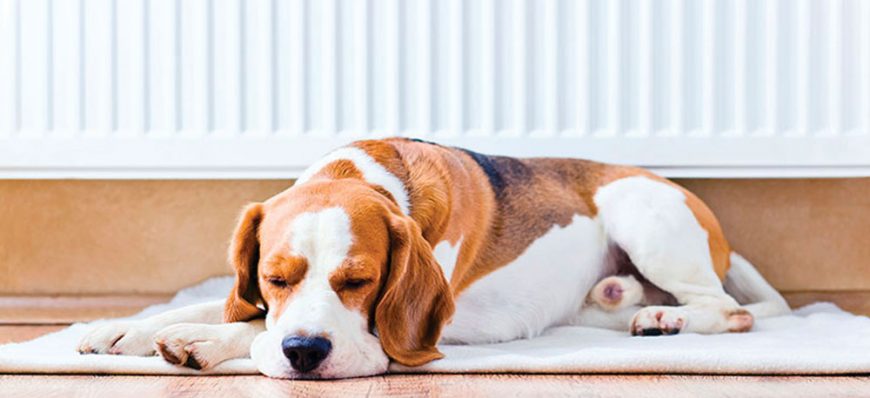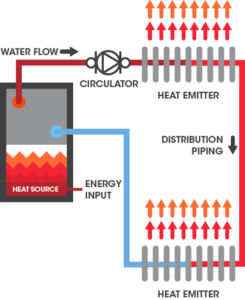FOR A FAST QUOTE CALL
0448 177 762FOR A FAST QUOTE CALL
0448 177 762
Hydronic heating transfers heat from a boiler system to water, and the heated water is transferred to a home or building through piping, and it radiates heat into the rooms where it is circulated. The water can be pumped through walls, floors, or both, depending on the type of system installed.
Unlike other heating systems that use fans or vents to distribute warm heat around a room, hydronic heating heats up through radiation, which results in an even distribution of heat.
Water being an excellent conductor of heat, it is evident that hydronic heating is so efficient. In a room, the hydronic system provides heat via thermal radiation.
Thermal radiation is the transfer of heat through the air which is a form of electromagnetic waves. In hydronic heating products such as wall-mounted radiators, heated towel rails and underfloor coils omit radiant heat to warm up the room. This is because radiant heat is absorbed by objects, which cannot be blown away or moved around.
All hydronic heating systems have boilers, and choices range from tankless hydronic water heaters to solar, geothermal, or combined systems boilers.
Heating exchangers can include underfloor radiant loops, baseboard heaters and radiators, wall and ceiling panels, or a combination of two or more.
Increased comfort due to personalised temperature controls, balanced humidity levels, quieter heating systems, economic benefits due to higher efficiency, and versatile installation.
Hydronic heating gives businesses and residential users the ability to reduce energy consumption. The Australian Energy Regulator defines hydronic central heating “if used wisely, they can be an economical and highly effective form of central heating”.
It can take up to 3 days depending on the size of the installation.
As one of the safest forms of warming up a room, hydronic heating is completely safe. Hydronic floor slab and panel systems don’t get very hot and be touched without getting burnt by people of all ages. The boiler will not cause any harm, but it is recommended that the unit is located in a part of the house that is not accessible by children.
Advantages of Choosing Hydronic Heating
Hydronic heating also offers more options than traditional duct and forced air systems. These options include:
If you would like to find out more information about hydronic heating, contact Zabs on 0448 177 762 or send us a message. We’ll be happy to provide more details about the products or how we can deliver a comfortable and efficient heating system around your home.
